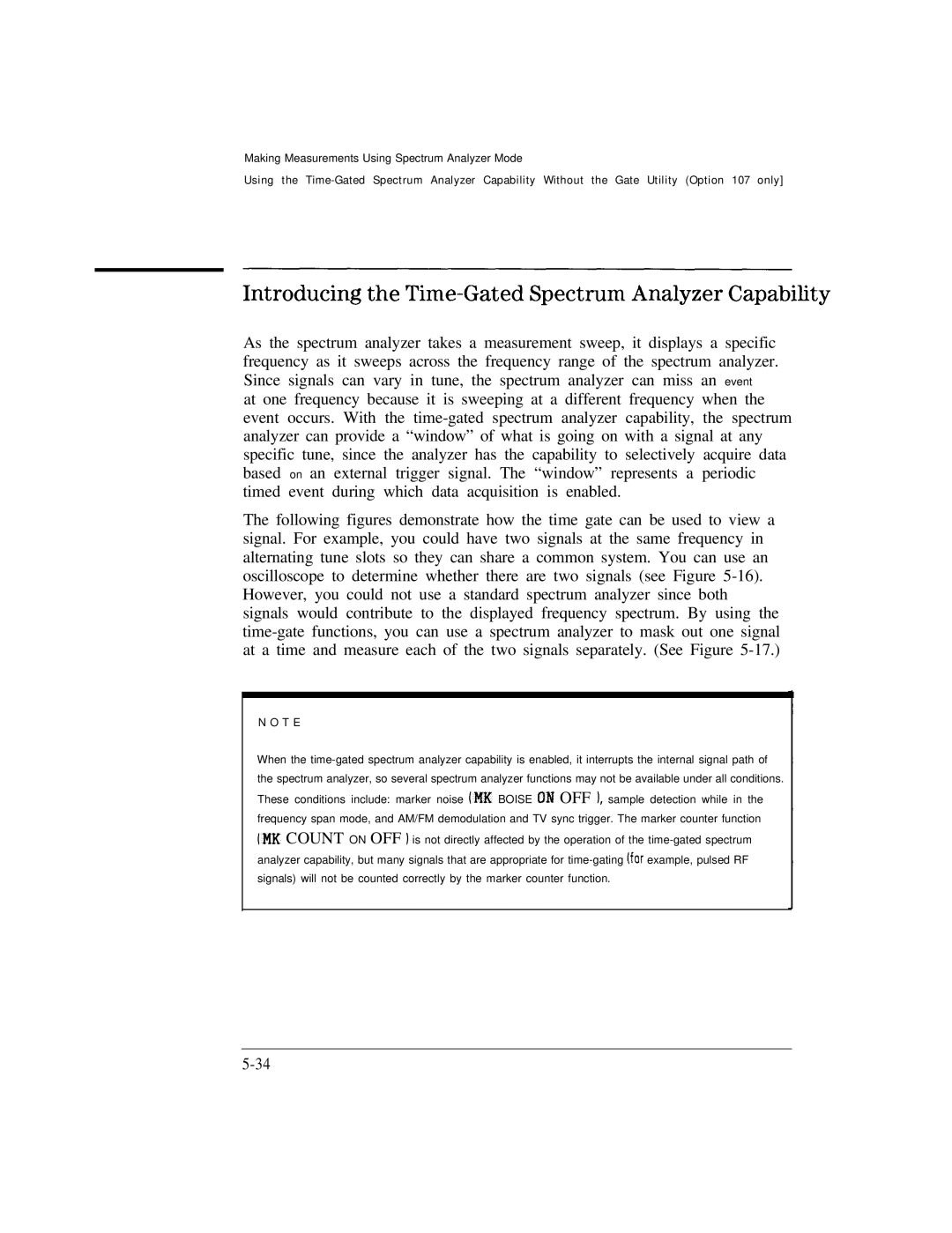
Making Measurements Using Spectrum Analyzer Mode
Using the Time-Gated Spectrum Analyzer Capability Without the Gate Utility (Option 107 only]
Introducing the Time-Gated Spectrum Analyzer Capability
As the spectrum analyzer takes a measurement sweep, it displays a specific frequency as it sweeps across the frequency range of the spectrum analyzer. Since signals can vary in tune, the spectrum analyzer can miss an event
at one frequency because it is sweeping at a different frequency when the event occurs. With the time-gated spectrum analyzer capability, the spectrum analyzer can provide a “window” of what is going on with a signal at any specific tune, since the analyzer has the capability to selectively acquire data based on an external trigger signal. The “window” represents a periodic timed event during which data acquisition is enabled.
The following figures demonstrate how the time gate can be used to view a signal. For example, you could have two signals at the same frequency in alternating tune slots so they can share a common system. You can use an oscilloscope to determine whether there are two signals (see Figure 5-16). However, you could not use a standard spectrum analyzer since both signals would contribute to the displayed frequency spectrum. By using the time-gate functions, you can use a spectrum analyzer to mask out one signal at a time and measure each of the two signals separately. (See Figure 5-17.)
N O T E
When the time-gated spectrum analyzer capability is enabled, it interrupts the internal signal path of the spectrum analyzer, so several spectrum analyzer functions may not be available under all conditions. These conditions include: marker noise IMK BOISE OM OFF 1, sample detection while in the frequency span mode, and AM/FM demodulation and TV sync trigger. The marker counter function IMK COUNT ON OFF I is not directly affected by the operation of the time-gated spectrum analyzer capability, but many signals that are appropriate for time-gating (for example, pulsed RF signals) will not be counted correctly by the marker counter function.

